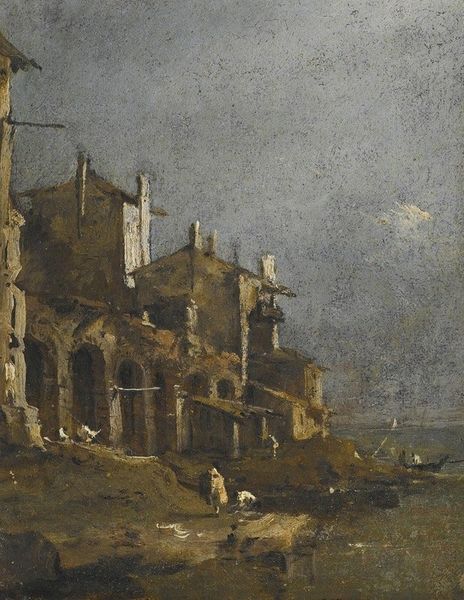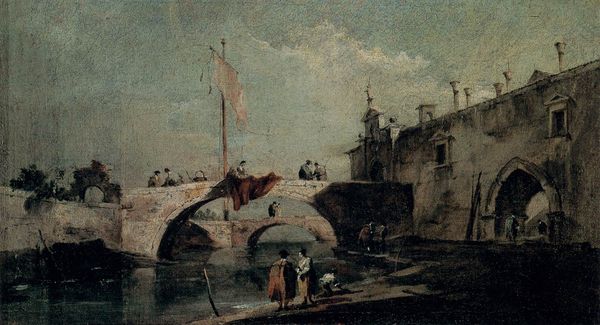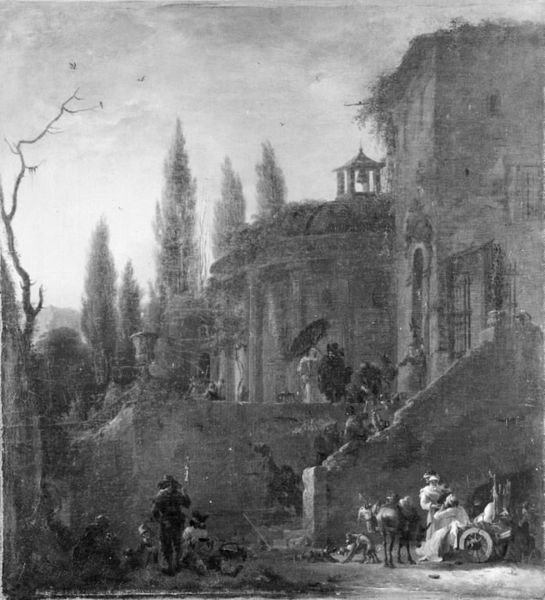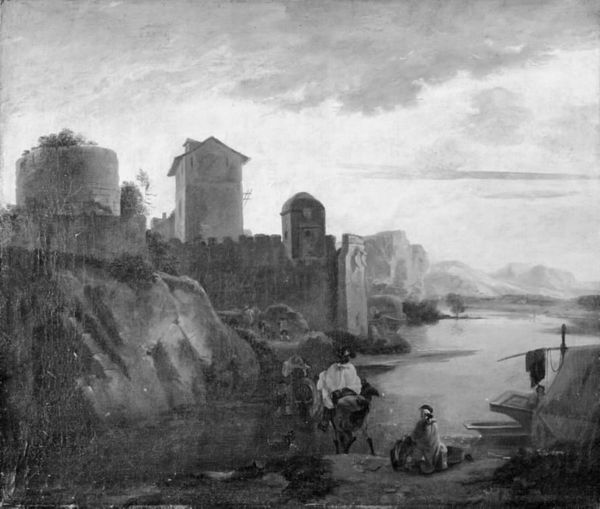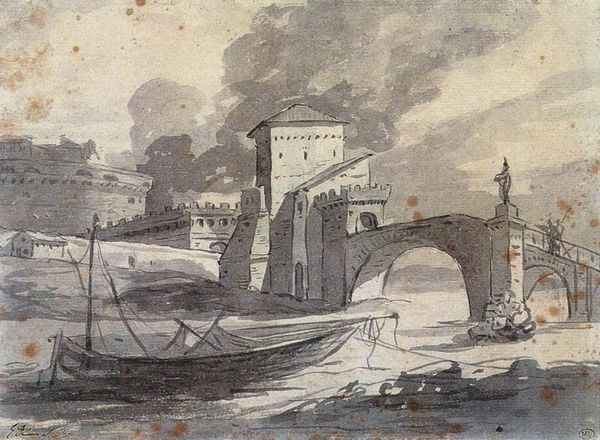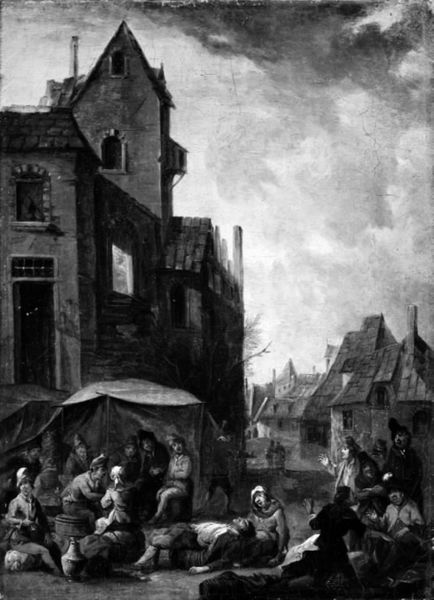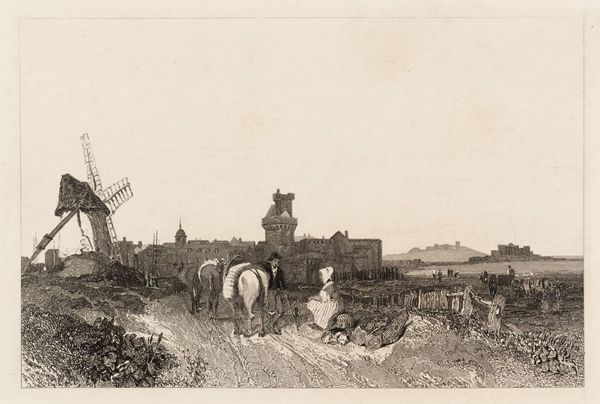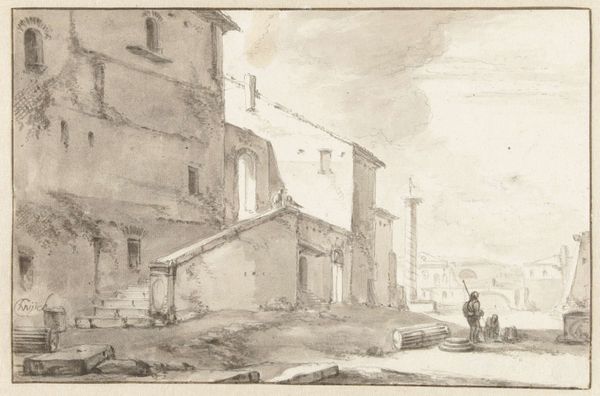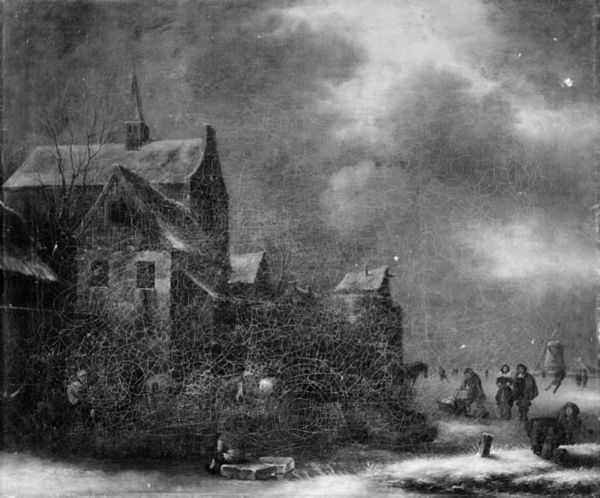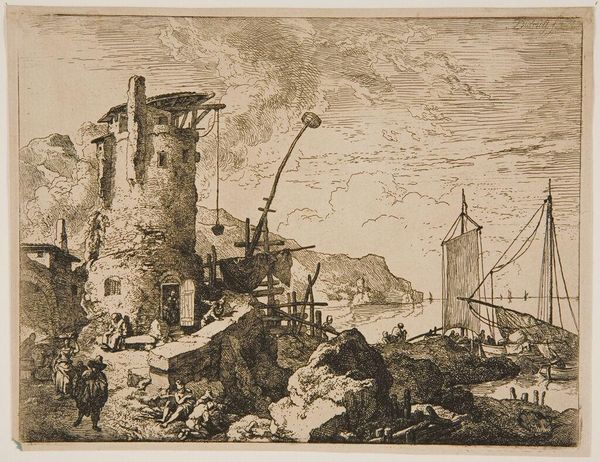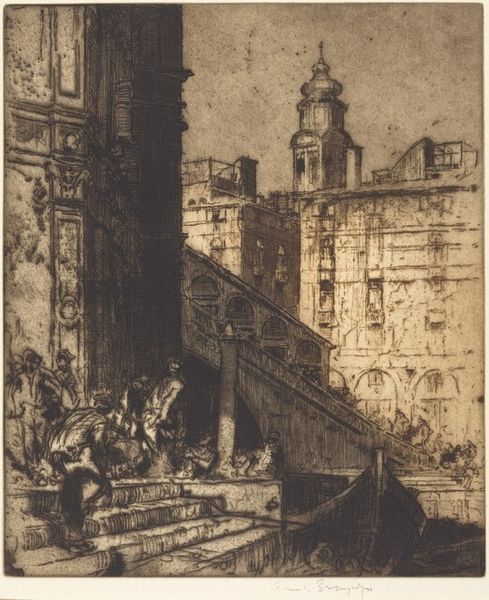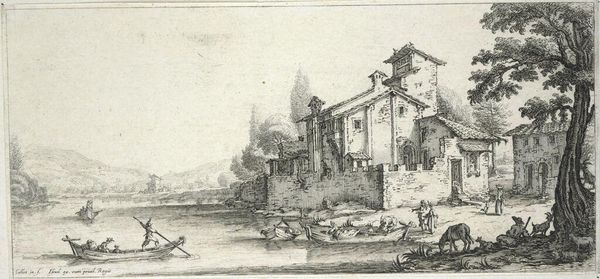
Dimensions: 8 3/8 × 6 3/4 in. (21.3 × 17.2 cm)
Copyright: Public Domain
Francesco Guardi painted this small oil on canvas, "Capriccio: The Lagoon", in Venice, sometime in the late 18th century. Using loose brushwork and a limited palette, Guardi evokes a mood more than a place. The lagoon shimmers, with a play of light and shadow that obscures any sense of hard-edged reality. We can easily imagine Guardi standing at his easel, rapidly capturing the scene. Yet, it's important to remember that oil painting was hardly a quick and easy medium at the time. Pigments had to be ground by hand, mixed with oil, and carefully applied in layers. This demanded skilled labor, not only from the artist but also from assistants who prepared the materials. Consider the social context of Venice at this time. The city was past its peak as a maritime power, but it remained a hub of trade and tourism. Guardi's capriccios, or imaginary landscapes, catered to wealthy visitors seeking picturesque souvenirs, or those that longed for a romanticized version of Venetian life. The work presents us with the question of how traditional landscape painting is embedded in a system of labor, class, and consumption. These elements are essential to understanding its full meaning, challenging distinctions between fine art and craft.
Comments
No comments
Be the first to comment and join the conversation on the ultimate creative platform.
